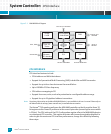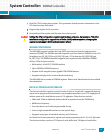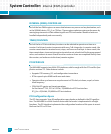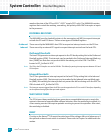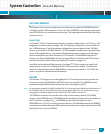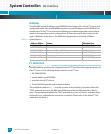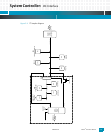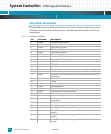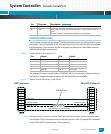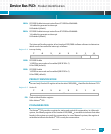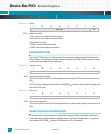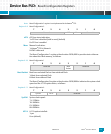
System Controller: GPIO Signal Definitions
Katana
®
752i User’s Manual 10006024-04
5-10
GPIO SIGNAL DEFINITIONS
The MV64460 system controller on the Katana
®
752i has 32 general-purpose input output
(GPIO) pins that are used for various purposes. The following table describes the GPIO pin
assignments.
Table 5-3: GPIO Signals Definitions
Pin: Direction: Description:
0 output console port transmit data
1 input console port receive data
2output PTMC site #1 PCI grant
3 input PTMC site #1 PCI request
4output PTMC site #2 PCI grant
5 input PTMC site #2 PCI request
6 output Ethernet MAC PCI grant
7 input Ethernet MAC PCI request
8 input PCI1 INTA
9 input PCI1 INTB
10 input PCI1 INTC
11 output INIT_ACT, driven to indicate the bridge is loading from serial ROM
12 input input from CPLD, used as synchronous versions of PERR and SERR
13 output driven low to turn off front panel fault LED once processor section is up
and running
14 input PCI1 INTD
15 – unused
16 output watchdog NMI
17 output watchdog expired
18 output I2C_HOLDOFF signal (Zircon PM)
19 output output enable for PTMC RMII clocks
20 input baud rate input clock for serial port
21—22 – unused
23 input IPMI Timerout, driven by IPMI microcontroller when there is a time-
out condition
24 output POST indicator
25 output driven high to put the IPMI microcontroller in reset
26 input Watchdog Maskable Interrupt (in)
27 input GIG0_INT interrupt signal from gigabit PHY (unused on rev. 0—1
boards)
28 input GIG1_INT interrupt signal from gigabit PHY (unused on rev. 0—1
boards)
29 input GIG2_INT interrupt signal from gigabit PHY (unused on rev. 0—1
boards)



